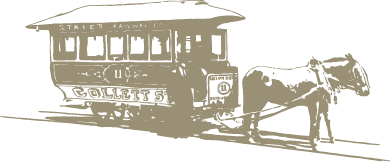Dallas Architecture: Elements of Style

D Magazine Article by Douglas Newby on Architectural Heritage of the Great Dallas Houses – below is a summary of article
The architectural style and history of Dallas is best expressed and understood through its neighborhoods and individual houses, not its commercial or public monuments. Designed by an intertwining family of architects, these houses share common influences but articulate three distinct architectural directions in Dallas.
Beverly Hills Eclectic
Dallas is a city that attracted people, ideas, and styles from across the country and from around the world. Thus the Dallas architectural family tree is firmly rooted in an eclectic expression, a current interpretation of traditional Georgian, Jacobethan, Tudor, Spanish colonial, Normandy, and Italian architecture. The Mediterranean strain of eclectic architecture was especially popular in California; Dallas architects interpreted that style and adapted it for Dallas. For decades, Beverly Hills architects have come to Dallas to design homes and Dallas architects have imported ideas from Beverly Hills – no wonder Highland Park feels like Beverly Hills. Both suburbs were designed in the same era by the same New York landscape architect, Wilbur Cook. And, currently, a prominent Beverly Hills architect is designing an equally prominent house in Highland Park on Beverly Drive.
Click here for an introduction on the Eclectic Style.
Texas Modern
The architectural style and history of Dallas is best expressed and understood through its neighborhoods and individual houses, not its commercial or public monuments. Designed by an intertwining family of architects, these houses share common influences but articulate three distinct architectural directions in Dallas.
This regional architecture is based on indigenous houses of Texas. This was a conscious rejection of European Eclecticism. Not only do these houses reflect a simplicity and honesty of form, but the architect’s respect for the environment remain Modern architectural themes today. Consistent with the spirit of early Texas settlers, artisans and architects worked hand-in-hand on the site to create houses that were truly Texan. David Williams, the father of this style, traveled extensively in Europe and was an accomplished Eclectic architect, but he drew his inspiration from Texas. His ideas for forms and materials came from early farm and ranch houses that he sketched across the state with his friend, O’Neil Ford. They took the durable and inexpensive standing seam metal roof they saw on rural barns and sheds and put it on sophisticated city houses. They used native limestone or unpainted brick for both interior and exterior surfaces, and they adapted the narrow horizontal country porches to catch the urban breeze. These practical pioneer designs had evolved in response to the bright sun and intense heat of Texas – Williams and Ford used them in designs that evoke a specific regional past.
Click here for an introduction on the Texas Modern Style.
Dallas Modern Style
The architectural style and history of Dallas is best expressed and understood through its neighborhoods and individual houses, not its commercial or public monuments. Designed by an intertwining family of architects, these houses share common influences but articulate three distinct architectural directions in Dallas.
By the 1930’s, the architects working for David Williams were also attracted to the simple, geometric designs, and industrial idiom coming out of Europe. They incorporated these elements using Texas materials. Many Dallas architects have worked in both branches of modernism – European and Texan – and the styles continue to overlap. Architects James Pratt, Max Levy, and Frank Welch have carried on the tradition of Texas Modern which includes indigenous architecture; Dave Braden, Bud Oglesby, E.G. Hamilton, and Lionel Morrison tend to emphasize the geometric shapes and clean surfaces of European Modernism while still incorporating regional materials.
Click here for an introduction on the Modern Style.
















